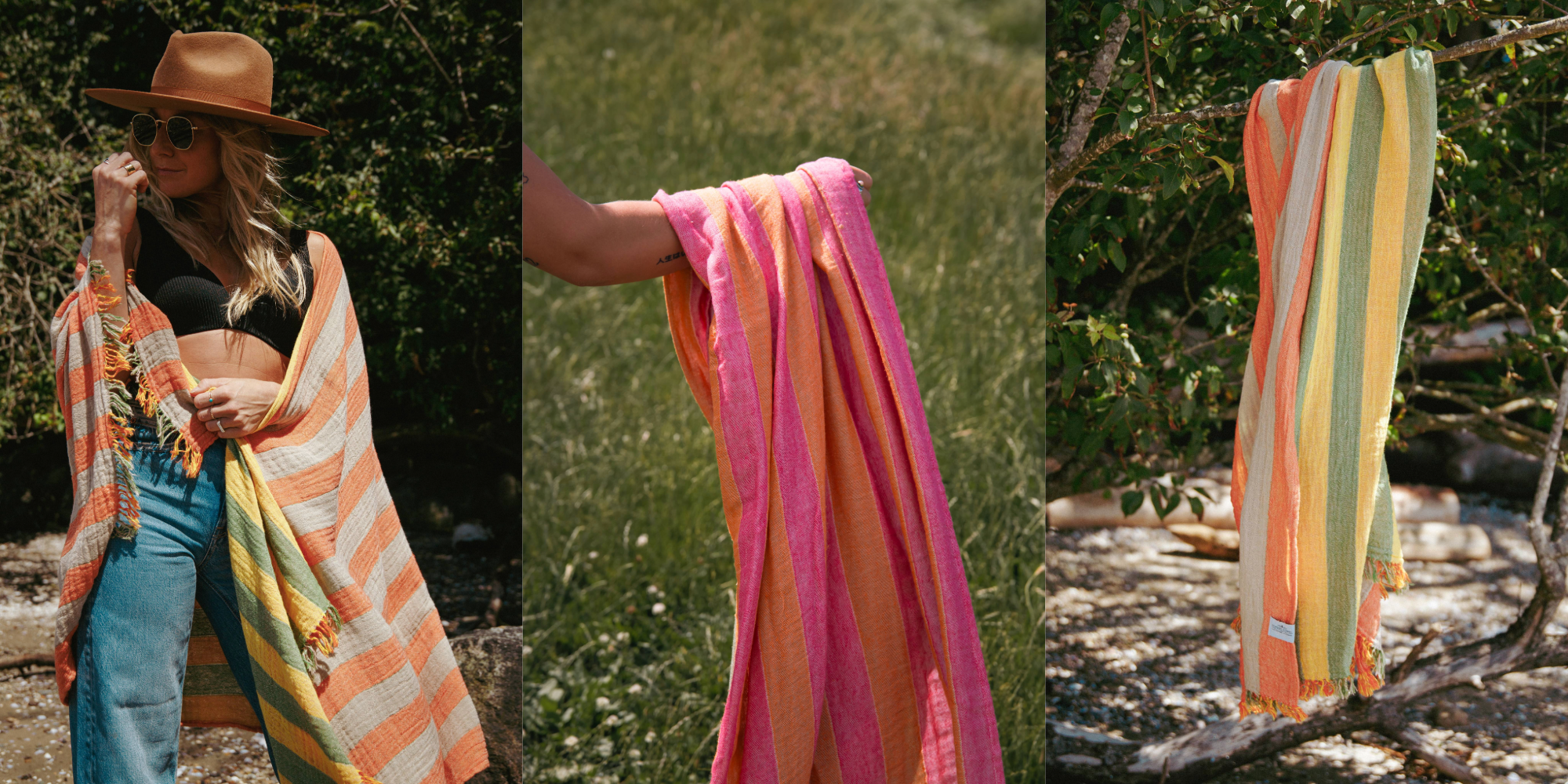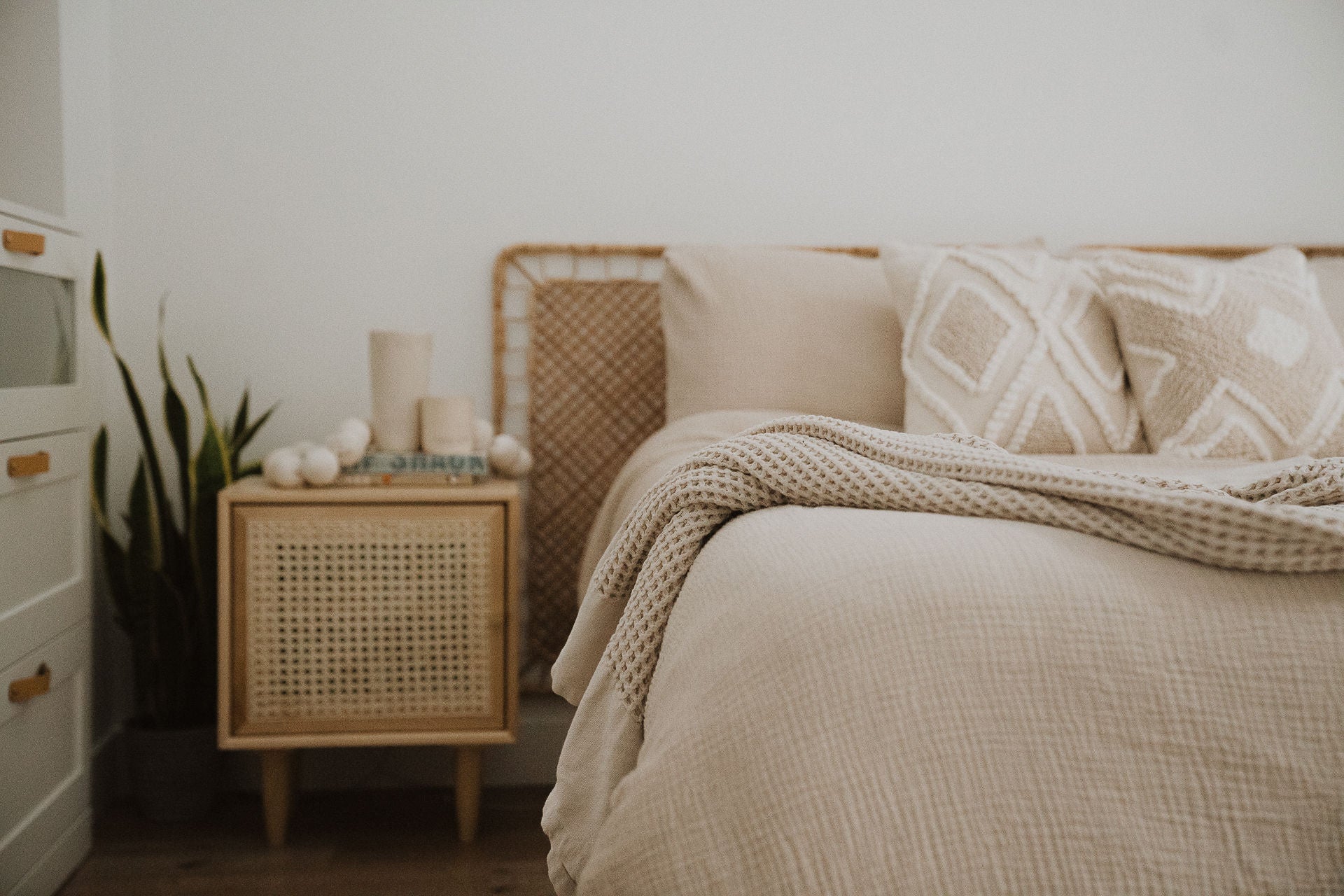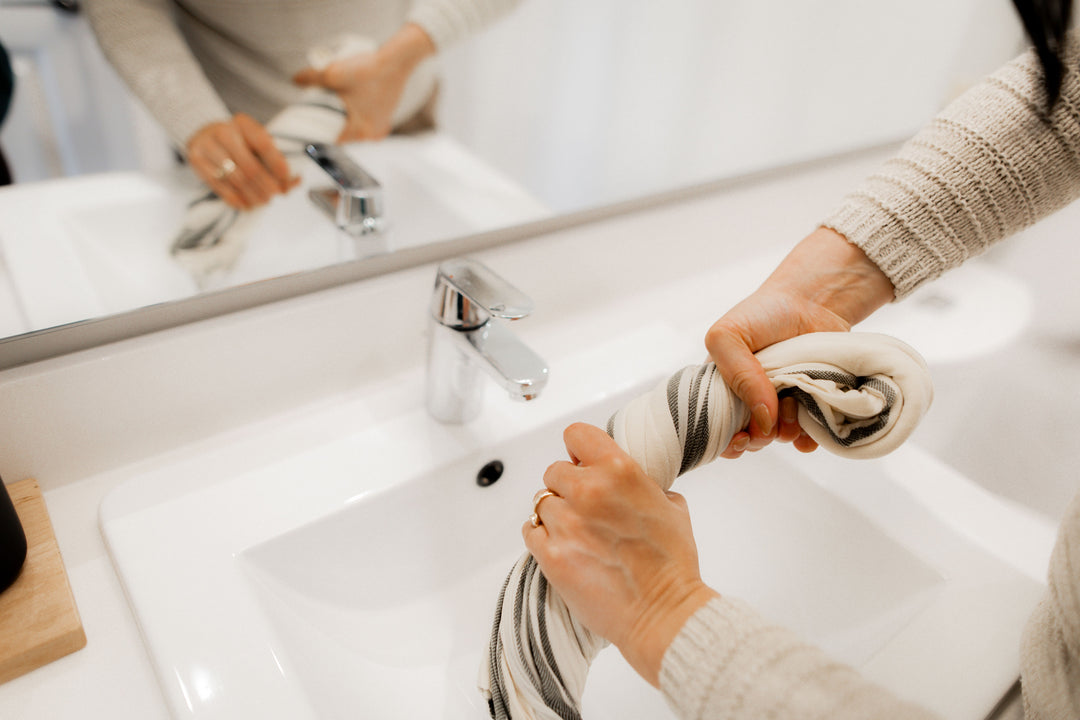Caring for Wool
Shrinking
It is a common misunderstanding; that heat causes wool to shrink, when in fact motion and friction play a much larger role. Shrinkage in wool (and other natural, woven fibres) typically occurs under these combined conditions: heat, motion and water.
Heat alone will not shrink wool, in fact we often steam wool garments in order to relax them and boil wool to disinfect it. (Under appropriate conditions) Heat and moisture will relax the fibres, leaving them malleable and susceptible to stretching / distorting. (useful when trying to "un-stretch" or reshape wool).
However, if wool is agitated when wet and/or hot, the friction causes the barbed/hooked edges of the wool to interlock with each other. When the fibres bind together, the weave becomes tighter and less flexible causing wool items to almost always shrink as a result. It's important to note that the motion from both the washing and drying process can have an effect.
This is why it is generally recommended that wool items are hand-washed in cold water and laid flat to dry to reduce risk of heat, and motion related shrinking.
We always recommend that you take every precaution necessary when caring for wool, but have determined that, when this isn't possible, there is some room for modification.
Many wool items can withstand a gentle (or wool specific) cycle - just be sure that it is not a long or aggressive and keep it cold.
Remedies:
There are many methods online about how to treat shrunken wool - many of them include using products such as baby shampoos or conditioners as well as products specially formulated to help relax shrunken wool. Due to the wide range of information and products, we cannot verify all of these methods, and cannot take responsibility for the outcome. We can; however, offer a few things to consider:
- Stick to natural products whenever possible. Vinegar and salt have many applications in household cleaning, and can be your best friends when caring for your natural fibres.
- Commercial products have so many ingredients, most of them unsavoury, make sure you take care and research the best product for you.
- Almost every method starts by soaking the item in a water-based solution before being carefully reshaped, and then air dried.
- Regardless of what additive you choose, it is important to remove as much residue as possible (this may require an additional rinse and reshaping).
- Wool items need to be handled very carefully when wet: do not wring out water, apply even tension when reshaping, do not lay on an uneven or bumpy surface,
- Note: Hanging on a line can cause stretching if really wet, and many clothes pins can leave indents.
Pilling
Pilling is usually caused by loose, residual fibres working their way to the surface, combined with friction. The friction causes the fibres to interlock resulting in little balls on the surface.
This type of pilling is common with natural woven products (cotton, linen, wool) and should diminish over time. Pilling can also occur when fibres are broken. This could happen with friction due to use over time and is often accelerated with exposure to heat or chemicals and moisture.
(Rough surfaces or sharp objects will increase the occurrence of loose/broken fibres and therefore result in more pilling). Excess pilling is typically the result of more wear (movement/friction), exposure to friction, or machine washing and drying.
Sunlight, and many commercial chemicals can break down fibres leaving them susceptible to pilling.
Remedies:
- Fabric shavers are a great way to remove pilling and keep things looking good as new.
-
Do not pick or pull off the balls - as this can lift additional fibres and result in new pills.












